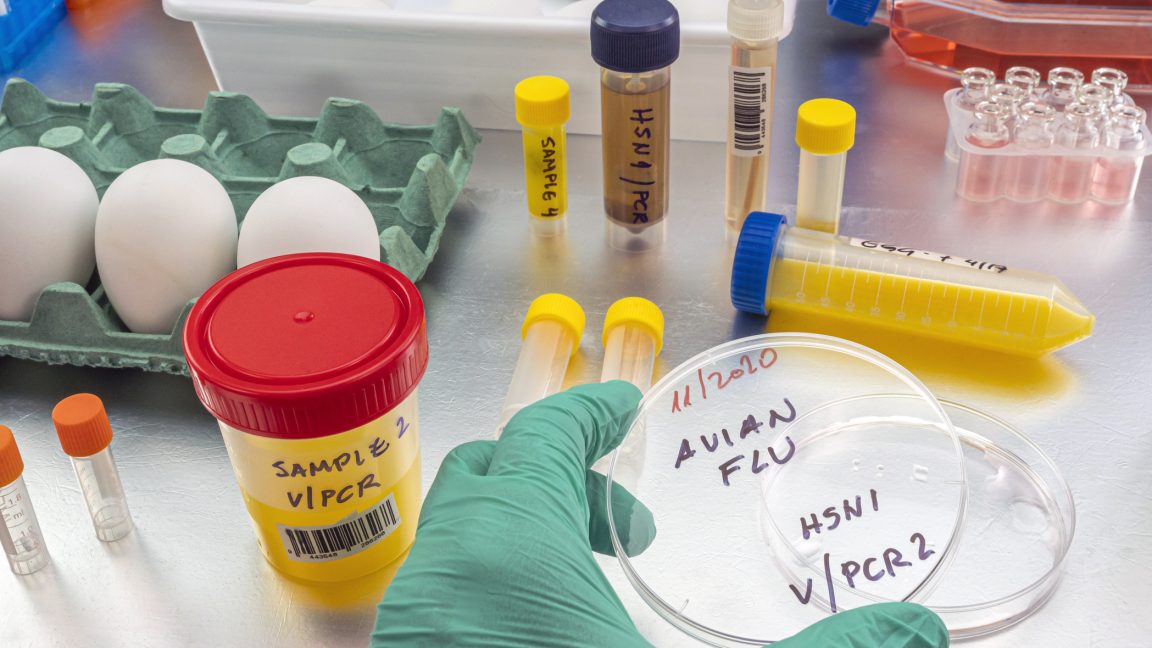Researchers Are Slowly Finding Ways To Stem The Tide Of PFAS Contamination
If you’ve been following environmental news over the past couple of decades, you’ve probably heard about PFAS – those pesky “forever chemicals” that seem to turn up everywhere from drinking …read more


If you’ve been following environmental news over the past couple of decades, you’ve probably heard about PFAS – those pesky “forever chemicals” that seem to turn up everywhere from drinking water to polar bear blood. They’re bad for us, and we know it, but they’ve been leeching into the environment for decades, often as a result of military or industrial activity. What’s worse is that these contaminants just don’t seem to break down—they stick around in the environment causing harm on an ongoing basis.
Now, researchers are finally cracking the code on how to deal with these notoriously stubborn molecules. It won’t be easy, but there’s finally some hope in the fight against the bad stuff that doesn’t just wash away.
Do You Really Want To Live Forever?

The term “forever chemicals” is media shorthand for perfluoroalkyl and polyfluoroalkyl substances—or PFAS for short. These substances earned their nickname from The Washington Post in 2018, and for good reason. These synthetic compounds feature carbon-fluorine bonds. These are some of the strongest chemical bonds found in nature and are very hard to break. This molecular stubbornness is actually a key feature of these chemicals, making them incredibly useful for things like firefighting foams or non-stick cookware—indeed, the remarkably unreactive Teflon was one of the first PFAS materials to come to prominence. However, this very feature also means they accumulate in the environment and in our bodies rather than breaking down naturally.
In practical terms, the strength of the carbon-fluorine bond means that PFAS chemicals are remarkably stable, and can easily resist high temperatures and chemical attack. Thus, they can persist in the environment for thousands of years, contaminating water supplies, accumulating in food chains, and most crucially—causing health issues. Research is ongoing, but PFAS chemicals have already been implicated in potentially causing everything from cancers to hormone disruption and liver damage.
Stop The Spread

Obviously, it’s not desirable to have toxic chemicals building up in the environment. Cleaning up existing contamination is of prime importance, particularly in areas where humans still live and work. Removing these chemicals in drinking water supplies remains challenging, but possible. The techniques are well understood, typically requiring the use of reverse osmosis techniques or lots of activated carbon. But what about all the contaminated human-built infrastructure, like military airfields and the like? Many of these concrete and tarmac structures have been soaking in PFAS chemicals for decades, and pose a continued risk of these substnaces leaking into the environment.
Australian firm AmbioLock has gone with an unconventional approach. Rather than trying to remove PFAS from contaminated concrete at airports and fire training grounds, they’ve developed a sealant to lock the chemicals in place. The idea is that the dangerous chemicals can be sealed to the engineered materials so they don’t leach into the environment or harm anyone using the infrastructure on the regular. The company has developed a silicate-based sealant called AmbioSeal, which penetrates the pores of concrete structures to create an impermeable barrier. In testing, the sealant achieved a 99.2% reduction in PFAS leaching from treated materials. The idea is that built infrastructure can be treated to seal PFAS contamination in place, such that the facilities can still be used safely while minimizing further risk from these deletrious chemicals.
The products could yet find grand markets with governments and private operators around the world. There are a great many PFAS contamination sites that are badly in need of remediation. However, it’s still an imperfect measure—ideally, we wouldn’t be spraying these nasty chemicals all over the place to begin with.
Ultimate Destruction
Government and industry are also keen to find ways to limit or avoid future potential releases, too. Enter a team of researchers from CSIRO and Colorado State University. Using computer simulations rooted in quantum mechanics, they modeled exactly what happens to PFAS molecules during pyrometallurgy. The scenario in question concerned lithium-ion battery recycling via pyrometallurgy—the process of incinerating battery materials to recover the metals inside. The researchers eager to determine what peak incinerator temperatures were necessary to destroy any PFAS component of the recyclable battery material, thus ensuring that it would not be released into the environment during the recycling procedure.

Their findings revealed a critical temperature threshold. At lower temperatures (200 °C to 500 °C), PFAS compounds simply vaporize and enter the gas phase, becoming mobile but otherwise remaining stable. The team found that higher temperatures were needed to get the tough C-F bonds to finally surrender and break apart completely. Modelling for an incinerator’s short two-second retention time for gases, the team determined a temperature of 950 °C was necessary to attain quick destruction. “We identified the intermediate compounds formed, the key barriers in the process, and determined the required temperatures and times to fully break down these chemicals,” noted Dr Jens Blotevogel, a CSIRO researcher involved with the project.
While the research focused on a specific recycling case, it has broader implications. The modelling may guide future work for other scenarios where it’s desirable to create a recycling process or similar in which PFAS materials will be destroyed rather than emitted to the environment. There is a particularly strong focus on how the world will recycle the masses of batteries now floating around the economy, so it will have direct benefits in limiting PFAS emissions in that regard, too.
These breakthroughs represent real progress, but the challenge now is implementation. Governments, industries, and relevant authorities will need to invest in research and techniques like these to develop cost-effective solutions for the thousands of PFAS-emitting and PFAS-contaminated sites worldwide. PFAS destruction represents one of the major mainstream environmental challenges today. As these researchers have shown, with the right analysis and some clever chemistry, “forever” doesn’t necessarily have to mean forever.















































































































































































![[The AI Show Episode 150]: AI Answers: AI Roadmaps, Which Tools to Use, Making the Case for AI, Training, and Building GPTs](https://www.marketingaiinstitute.com/hubfs/ep%20150%20cover.png)
![[The AI Show Episode 149]: Google I/O, Claude 4, White Collar Jobs Automated in 5 Years, Jony Ive Joins OpenAI, and AI’s Impact on the Environment](https://www.marketingaiinstitute.com/hubfs/ep%20149%20cover.png)































































































































![[PHP] Upgrading from PHP 7.4 to 8.1](https://media2.dev.to/dynamic/image/width%3D1000,height%3D500,fit%3Dcover,gravity%3Dauto,format%3Dauto/https:%2F%2Fdev-to-uploads.s3.amazonaws.com%2Fuploads%2Farticles%2Fqmaaabplfbcjejg2rr5n.png)






































































































































_ArtemisDiana_Alamy.jpg?width=1280&auto=webp&quality=80&disable=upscale#)




























































































![Google TV is finally preparing sleep timer support as app readies Material 3 Expressive [Gallery]](https://i0.wp.com/9to5google.com/wp-content/uploads/sites/4/2024/01/google-tv-logo.jpg?resize=1200%2C628&quality=82&strip=all&ssl=1)













![Apple Shares Official Trailer for 'Smoke' Starring Taron Egerton [Video]](https://www.iclarified.com/images/news/97453/97453/97453-640.jpg)
![Apple's M4 Mac Mini Drops to $488.63, New Lowest Price Ever [Deal]](https://www.iclarified.com/images/news/97456/97456/97456-1280.jpg)










































































